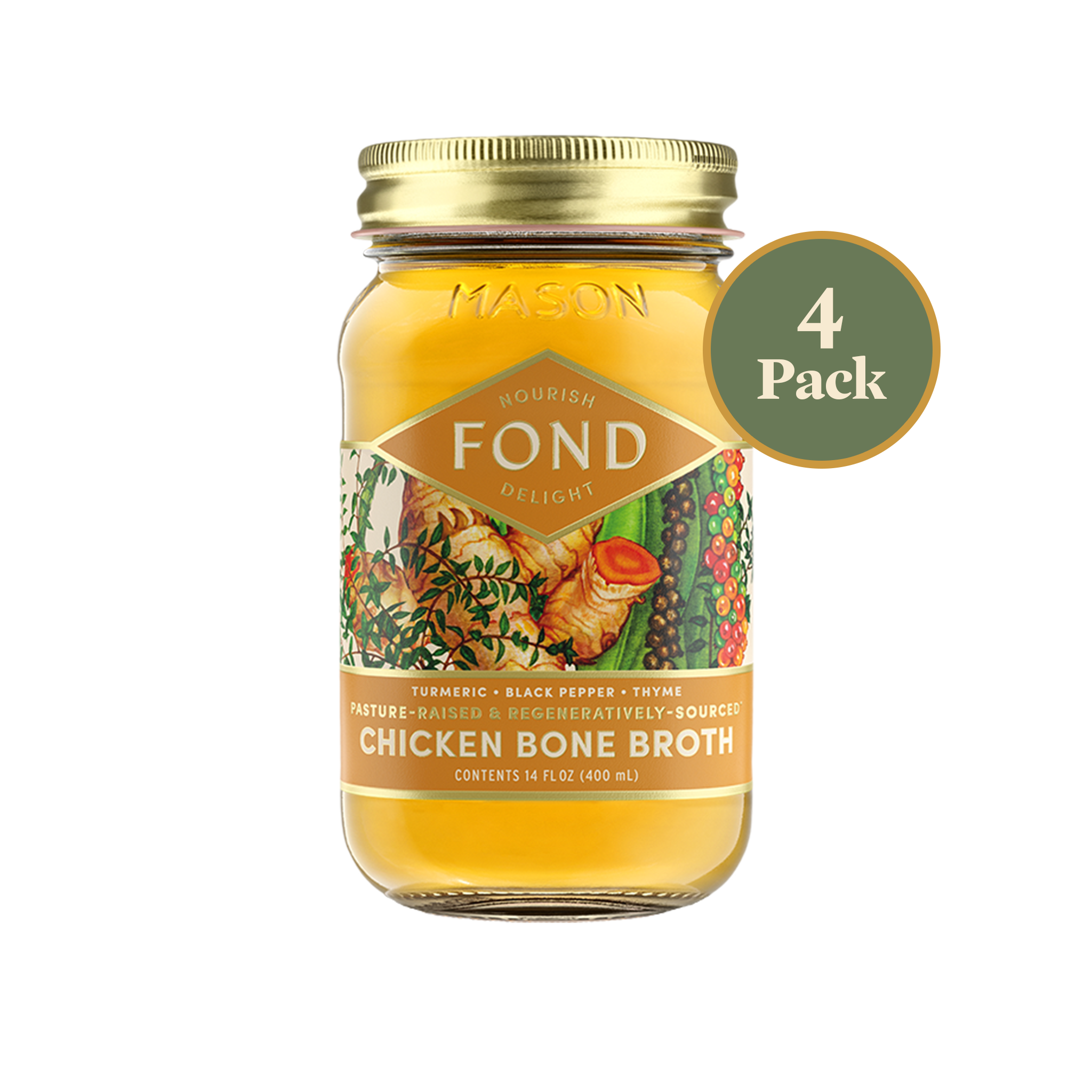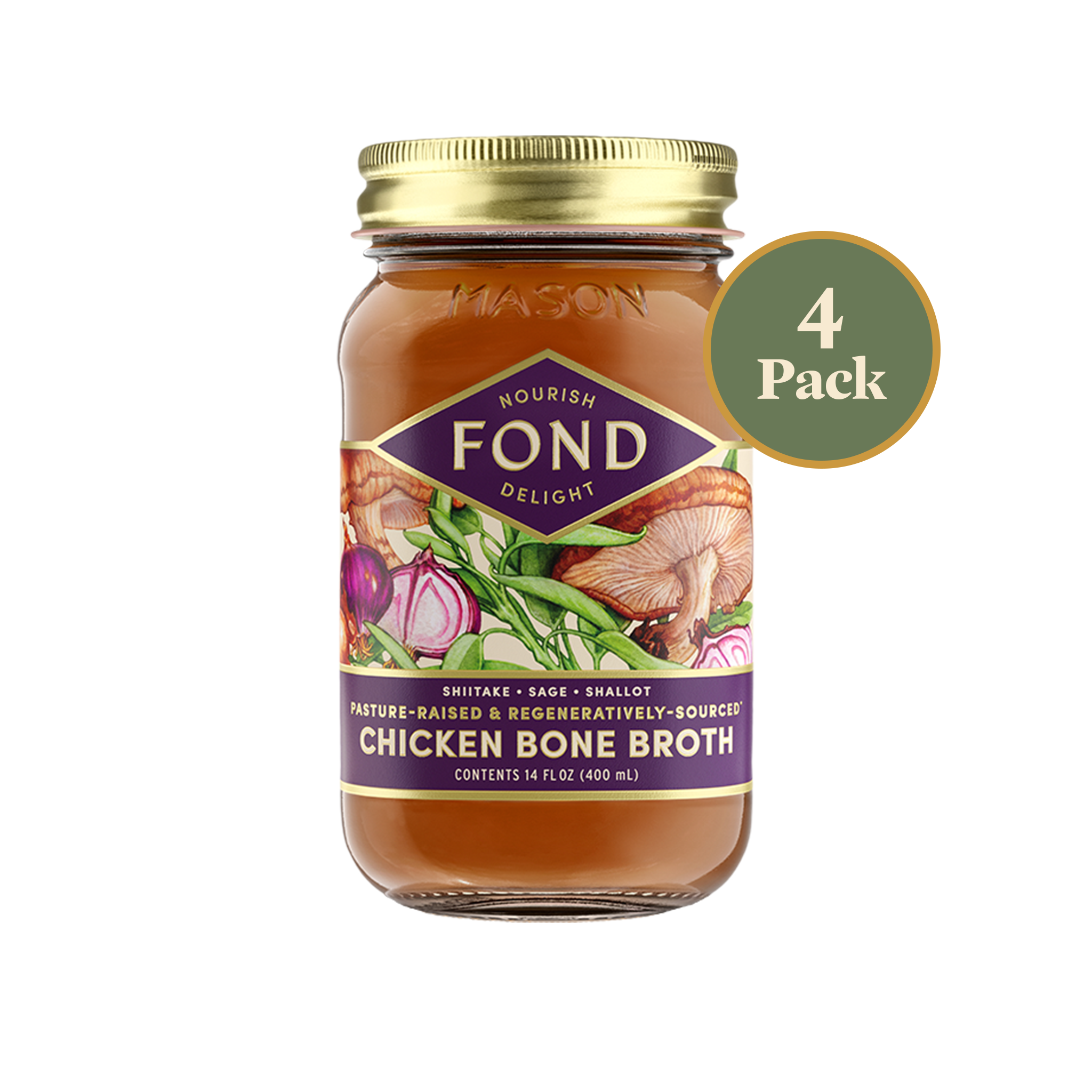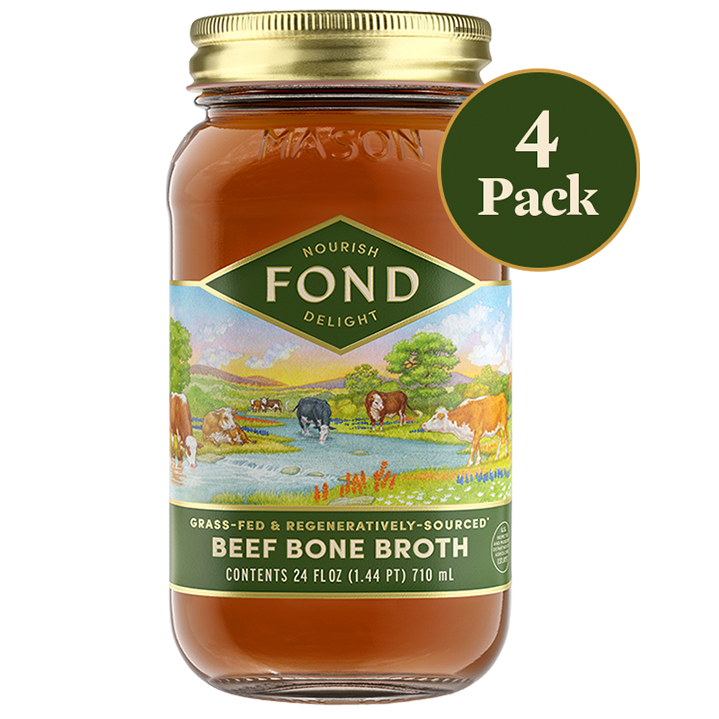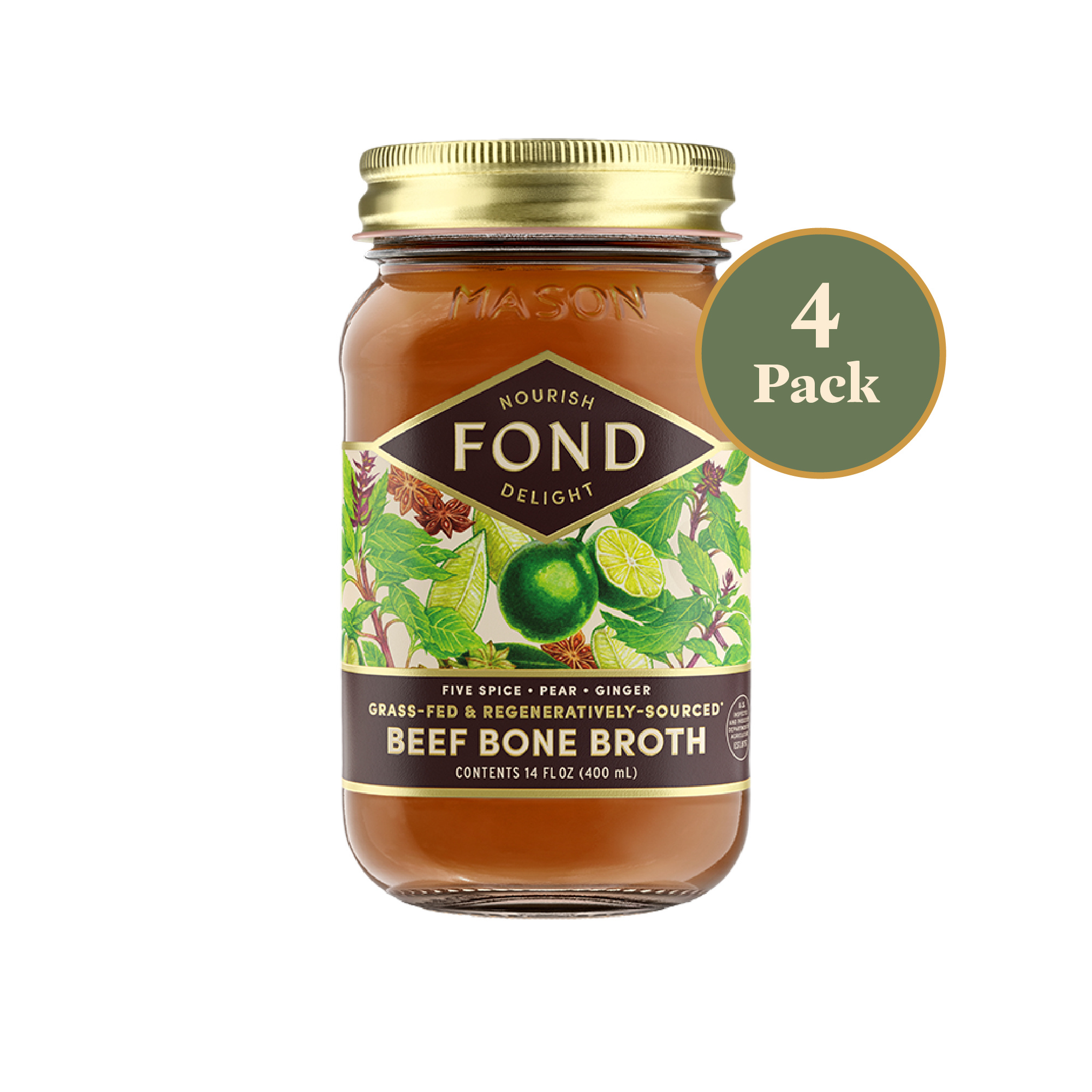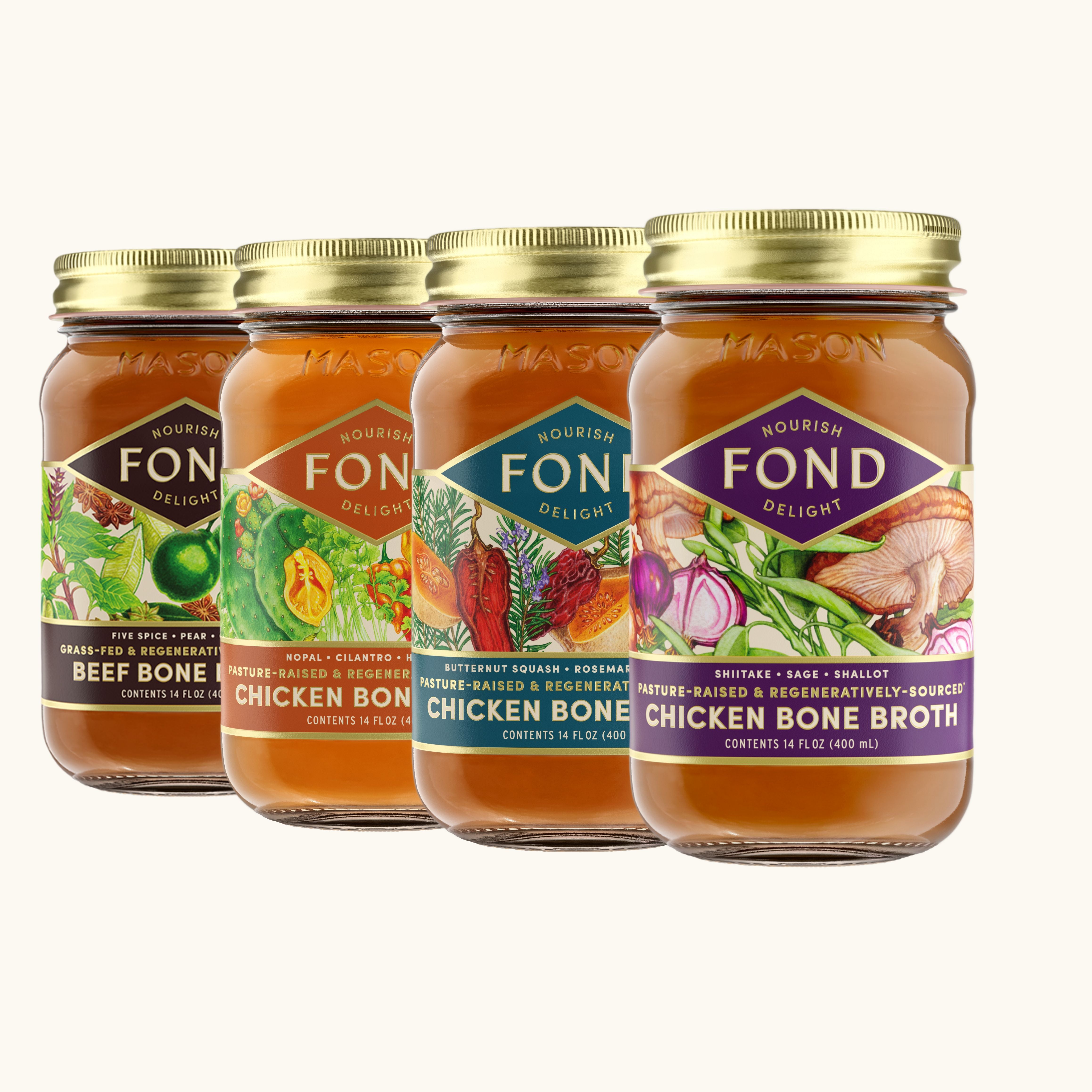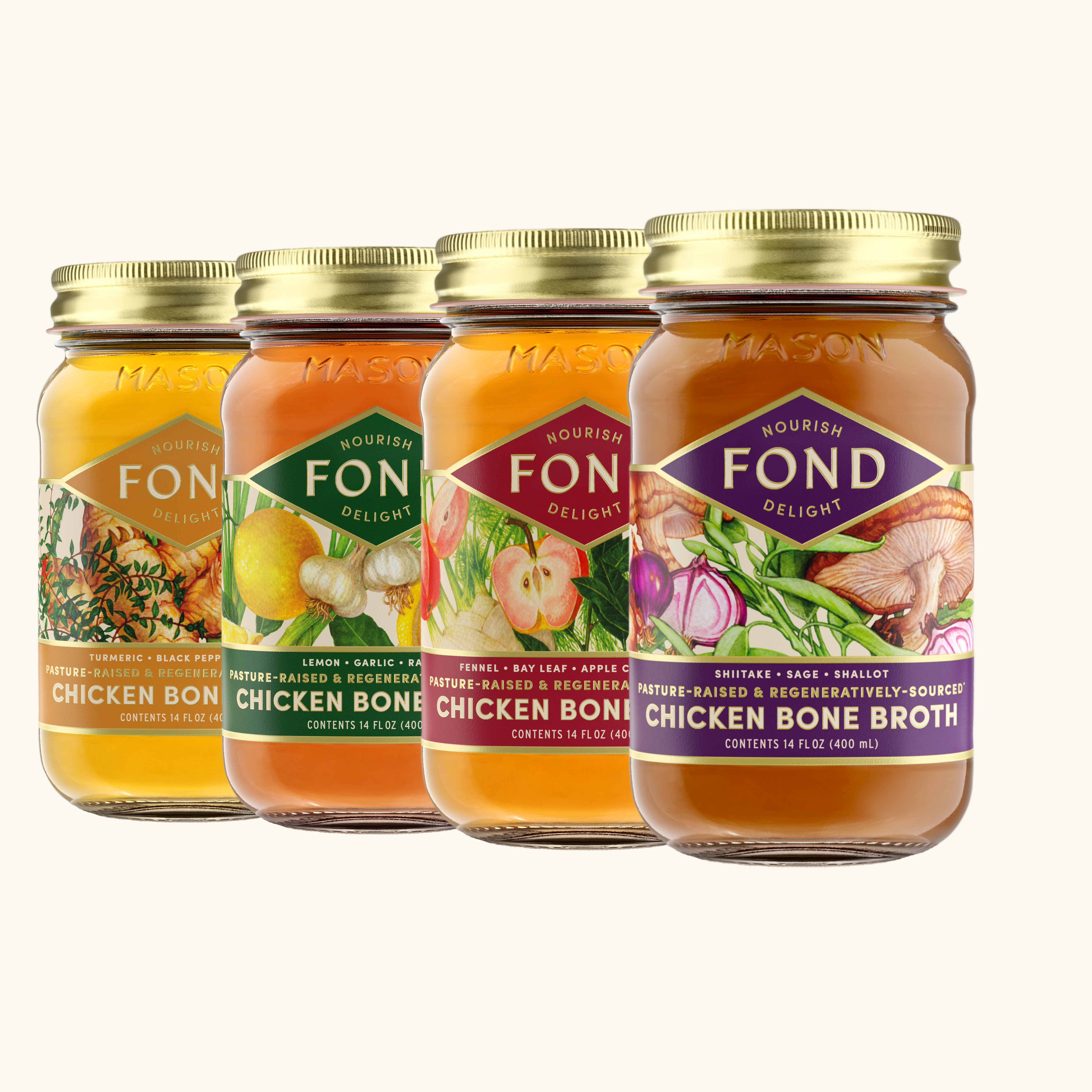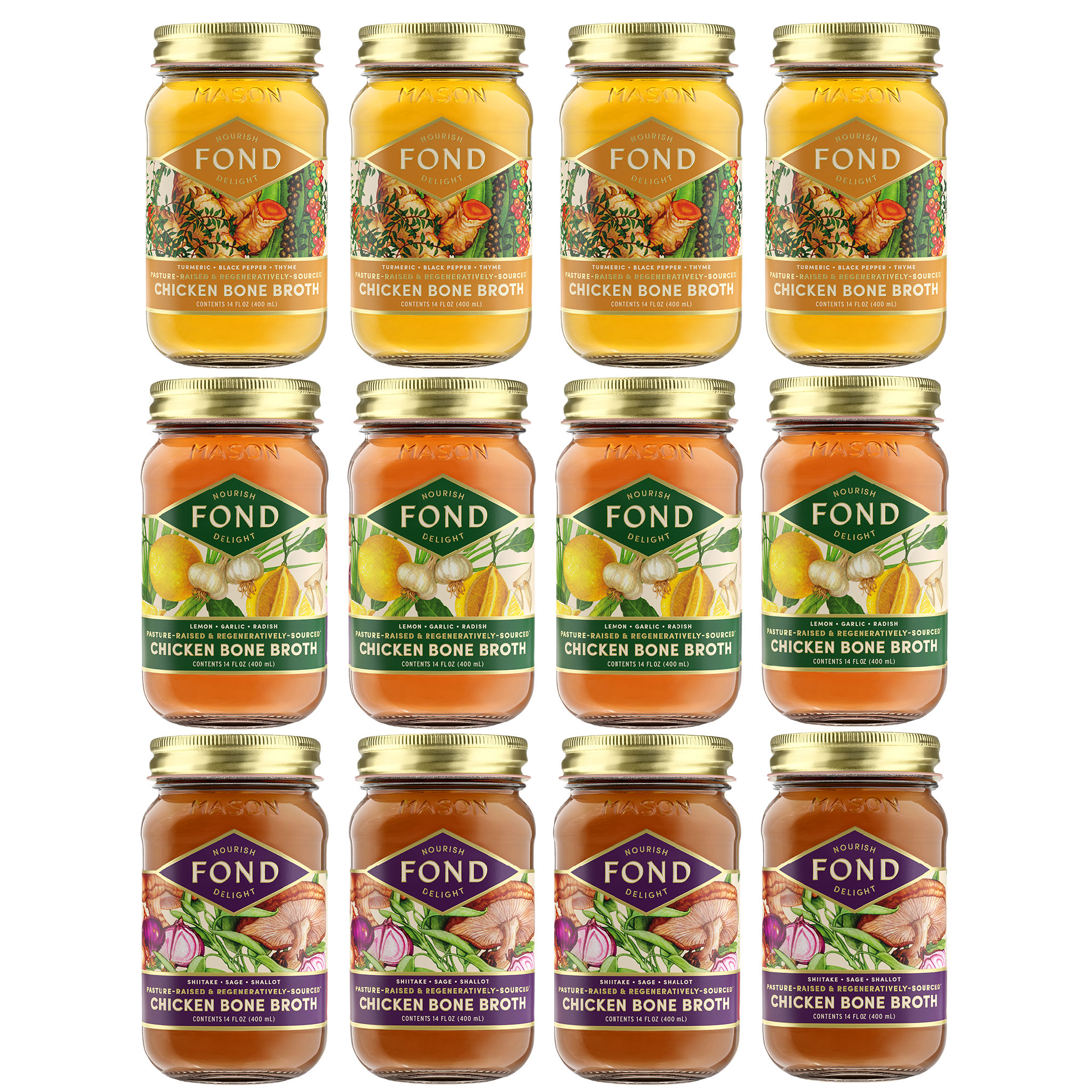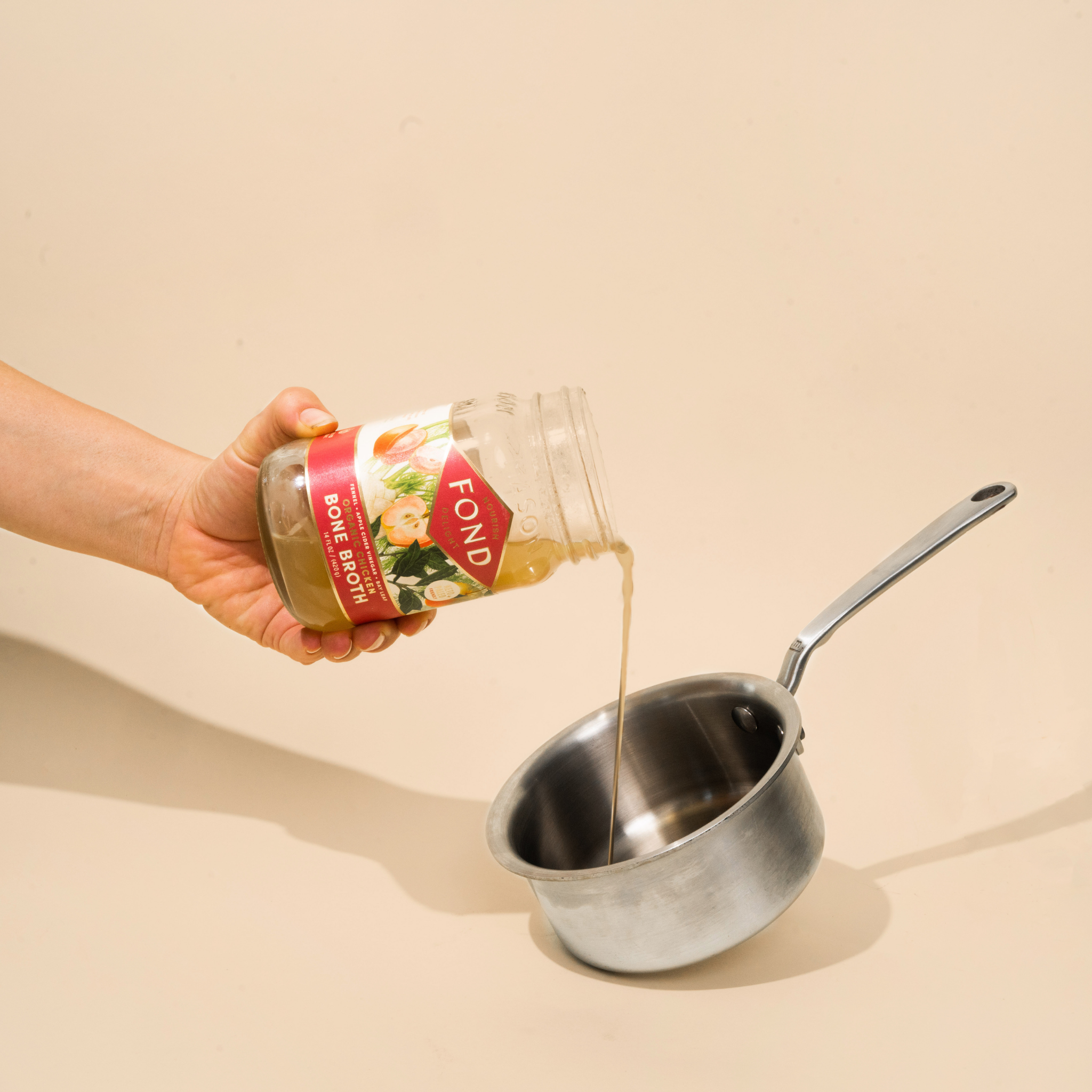Glyphosate is becoming an increasingly popular topic of conversation within the health and wellness industry, but there’s still a lot of misinformation out there about its impact and potential health risks. There’s also a lack of information about ways to both limit and help mitigate exposure. We want to change that! Today, we’re sharing all about what glyphosate is, why (and how!) to limit exposure, and ways to support your body on a regular basis.
What is Glyphosate?
Glyphosate is a widely used broad-spectrum herbicide used to regulate plant growth and ripen specific crops. Broad-spectrum means that it impacts all plants, so it can kill both crops and the weeds that surround them.
It works by preventing plants from making the proteins they need to survive. It does this by blocking the shikimate pathway, which is the metabolic pathway in plants that’s important for the synthesis of amino acids like phenylalanine, tyrosine, and tryptophan. Glyphosate was originally deemed safe because animals (and by extension, humans) don’t have a shikimate pathway. The bacteria that make up our gut microbiome, however, do have one. We’ll share more about the problems this causes in humans later in the article!
According to the United States Environmental Protection Agency (EPA) “There are approximately 280 million pounds of glyphosate applied to 298 million acres of agricultural land annually.” Despite its widespread use, there has been increasing controversy surrounding glyphosate and its potential dangers to human health and the environment.
History of Glyphosate
Glyphosate was originally patented in 1961 as a descaling agent used to clean calcium and mineral deposits present in the pipes of hot water systems. Most important to note here is that descaling agents have metal chelating properties, meaning they are good at binding heavy metals and minerals like calcium and magnesium. This may be a good thing for pipes, but it’s not a good thing for the human body.
By 1970, a scientist at the agrochemical corporation Monsanto realized that glyphosate was an effective weedkiller, and the company brought it to the market in 1974 as Roundup.
Initial toxicity testing led to an assumption that glyphosate-based herbicides didn’t pose a risk to humans or other animals and as a result, regulatory agencies around the world set high acceptable exposure limits.
Because glyphosate-based products kill all plant life (not just weeds), crops were not able to withstand the increasing application. Monsanto had to create genetically-modified plants, termed Roundup-ready crops, that could tolerate the ever-increasing amount of glyphosate being sprayed on them. The first of these crops hit the market in 1996. Monsanto began with soybeans, corn, canola, sugar beets, cotton, alfalfa, and sorghum, and they’re currently working on wheat. The genetic engineering meant these specific crops could now survive glyphosate application. With this development, the same company that created (and was producing) the problem also created the “solution.”
Unfortunately, because the crops could now more easily tolerate glyphosate, this “solution” led to even more of the herbicide being sprayed on our crops.
Now for some absolutely staggering numbers:
- The amount of glyphosate applied to crops has increased 100-fold since the 1970s
- Since Roundup-ready crops hit the market in 1996, glyphosate use has increased 15-fold.
- 1.5 billion lbs of Roundup are used each year in over 160 countries, mostly in conjunction with GMO crops.
- 19 billion (with a B!) lbs of glyphosate have been sprayed into the soil since the 1980s.
Following mounting legal issues, including several lawsuits from farmworkers who had developed various cancers after working with glyphosate, Monsanto was acquired by pharmaceutical and biotech giant Bayer in 2018. Bayer stopped selling Roundup in 2013 due to risks to farmworkers and consumers.
The amount of glyphosate that has been sprayed is hard to fathom, but the more that we’ve sprayed, the more that this toxic herbicide is ending up in our food and eventually, our bodies. Unfortunately, because childrens’ bodies are smaller, there is more bioaccumulation of glyphosate in their tissues, and they experience toxicity symptoms more easily.
What are the dangers of Glyphosate?
Glyphosate has been classified as a probable human carcinogen by the International Agency for Research on Cancer (IARC). The IARC conducted a comprehensive review of the available scientific evidence and concluded that there is strong evidence that glyphosate can cause cancer in humans.
The Environmental Working Group (EWG) is working to move glyphosate from a probable human carcinogen to a higher risk category. They’re working with the World Health Organization (WHO) to look at 1,000 peer-reviewed studies on the carcinogenicity of glyphosate.
Even with these designations and the evidence already in circulation, we are still in the early stages of collecting data on exposure and fully acknowledging glyphosate as cancer causing.
In addition to being a known carcinogen, glyphosate can also affect other parts of the body. The repeated consumption of this chemical has been linked to multiple potential long-term health risks such as reproductive and developmental issues, cancer, and kidney damage.
Health Risks of Glyphosate
To start, we want to share some frustrating, troubling stats around glyphosate and human health.
- In a CDC study of 650 children, 87% had detectable levels of glyphosate in their urine. For these children, agriculture was not a factor, meaning their main route of exposure was through their food.
- According to a study by the Federal Health agency, 80% of adults had detectable levels of glyphosate in their urine.
This means that almost all of us, and especially children, are being regularly exposed to glyphosate, and our bodies are working hard to detox from its impacts.
High level, glyphosate toxicity impacts the liver, reproductive system, gut, and the brain. It can also impact neurotransmitter production and suppress levels of serotonin, leading to depression, anxiety, and cognitive decline. Constant exposure to glyphosate can trick the body into storing it, since glyphosate mimics other essential nutrients. More on that later!
The Shikimate Pathway
As we mentioned earlier, glyphosate blocks the shikimate pathway in plants, meaning plants grown with glyphosate application have lower amino acid production. Additionally, 35% of applied glyphosate binds to soil particles and minerals (that chelating effect we discussed earlier!) which can create less nutrient-dense plants. Less nutrient-dense plants = less nutrient-dense food.
Humans also have a microbiome that is made up of trillions of bacteria that have a shikimate pathway themselves, and regular consumption of glyphosate-containing foods blocks this crucial metabolic engine. In turn, this impacts human gut health and sterilizes the microbiome.
Glyphosate has an antibacterial effect in the gut; our “bad” or pathogenic bacteria aren’t often impacted by it, but our good bacteria are. There are studies demonstrating an altered microbiome in those with regular glyphosate exposure. Specifically impacted are a few bacteria strains - Lactobacillus, Bifidobacteria, and Enterococcus. This decrease in beneficial bacteria and allowance of pathogenic bacteria to thrive can result in dysbiosis, or an overgrowth of infections and “bad” bacteria, leading to digestive symptoms like bloating, gas, diarrhea, and others and intestinal permeability (or leaky gut).
Glyphosate and Glycine
Part of glyphosate’s molecular structure includes glycine. Because of this overlap, the body holds onto glyphosate because it believes it can be a substitute for glycine. In the body, this is called molecular mimicry. We can become glycine-deficient, with the body holding onto higher amounts of glyphosate, which can then damage organs and tissues.
As we’ve talked about in depth, glycine is a key amino acid in bone broth and is responsible for a number of things in the body, including:
- Aids in the production of GABA
- Plays a role in glutathione (the body’s master antioxidant) production
Because our cells are replicating every day, we have an opportunity to “detox our DNA” by flooding the body with glycine. This allows the potential for an abundance of cells made with glycine and not glyphosate. In addition, higher levels of glycine support the body's ability to produce and utilize glutathione, which helps neutralize harmful substances like glyphosate and other toxins. We’ll talk more about this in the section on mitigating risks.
Mineral Deficiencies
As we mentioned earlier, glyphosate is great at chelating, or binding, to metals and minerals. In particular, in those with glyphosate exposure we see deficiencies in the essential minerals manganese, iron, calcium, and magnesium.
It can also form compounds with heavy metals. These metals can’t be broken down by the body and can eventually damage organis.
Detox Pathways
Contrary to what the “latest and greatest” detox supplement will tell you, our bodies do have natural detox pathways that are supported by our food and lifestyle choices. With chronic exposure to glyphosate, we end up with deficiencies in detox-supporting nutrients and antioxidants (like glutathione), stressing our detox pathways.
Cancer Risk
Whenever we talk about chronic deficiencies, issues with gut health, and continued exposure to a toxic chemical, cancer is going to be considered a potential outcome.
In 2020, Bayer paid out more than $10 billion in damages to people who had been diagnosed with cancer as a result of glyphosate exposure. A 2019 study found that exposure to (and absorption of) glyphosate on a regular basis increases cancer risk by a whopping 41%. This makes us truly angry, and distraught over this preventable cancer exposure.
During the process of these lawsuits, it was alleged that Monsanto purposefully failed to tell consumers about the product’s health and safety risks for decades.
Environmental Impact
We aren’t going to dive too deeply into this section in this article, because we hope it’s clear that spraying billions of lbs of synthetic herbicides onto our land and soil isn’t going to have a happy ending.
Glyphosate-Resistant Weeds
In a twist that will surprise absolutely no one, with the ever-increasing amount of glyphosate that’s being sprayed, weeds are getting wise to this toxin. This is manifesting in the emergence of glyphosate-resistant weeds, or so-called superweeds. There have been 24 reports of glyphosate-resistant weeds so far, with 14 of them emerging in the US. To get them under control, farmers not only have to rely on additional herbicides, but also even more glyphosate (since this can still technically kill them) and tilling of the land (which releases carbon into the atmosphere).
Soil and Biodiversity Disaster
Whenever we spray pesticides and herbicides, those run-off into the nearby water supply, contaminating drinking water. As a secondary effect, the glyphosate impacts all of the native grasses and natural vegetation that it crosses on its run-off journey, meaning it devastates everything in its path to contaminating our water supply. This run-off also impacts the habitats and health of our pollinators and songbirds, leading to loss of biodiversity on farmland and beyond.
Additionally, because of the impacts of the blocked shikimate pathway, our soil itself becomes more sterilized and demineralized. Our soil is literally dying, becoming dirt instead, and more easily eroding.
Where is Glyphosate Found?
Shockingly, many popular foods contain glyphosate. In fact, over 750 products containing glyphosate are currently for sale in the United States, and that’s not counting the individual ingredients it’s found in, like wheat, oranges, and oats.
Not only is glyphosate sprayed on crops, but it’s also used as a desiccant, or drying chemical, to dry grain-based products. Crops can be harvested sooner if a desiccant is applied. Unfortunately, this further increases the likelihood that glyphosate is on the final food product and any products made from that ingredient. It also means that some foods, like oats or wheat, are hit with glyphosate twice; both in the growing process and in the drying process. Lately, the chickpea pasta company Banza has come under fire for having extremely high levels of glyphosate in their products, and that’s because of the use of desiccants on chickpeas and beans.
Food that commonly contain high levels of glyphosate:
- Soybeans
- Corn (including maltodextrin, corn fiber, and corn syrup) - both corn and soy are the biggest drivers of glyphosate exposure
- Chickpeas - including hummus and pastas
- Wheat - including crackers, cereal, and pastas
- Oats
- Oranges and orange juice - 90% of oranges in the US
- Rice
- Almonds - 85%
- Figs - 85%
- Grapefruits - 85%
- Pistachios - 85%
- Grapes
- Sunflowers
Products that have been tested to have high glyphosate levels are some of the most recognizable in the world, including Cheerios, Goldfish, Nature Valley granola bars, Stacy’s Pita Chips, Oreos, Doritos, Fritos, Little Debbie’s Oatmeal Cream Pies, and Back to Nature Crispy Cheddar Crackers.
Unfortunately, glyphosate is everywhere. Even if you’re buying organic or otherwise high-quality fruits, vegetables, and products, there is always the potential for cross-contamination from the water and air. Still, the best bet for avoiding glyphosate is choosing organic, regenerative, and/or biodynamically grown foods, or shopping with a local farmer whose growing practices you’re familiar with.
Some hopeful news - those that eat organic foods on a regular basis were shown to have 80% lower levels of glyphosate than those who do not.
Mitigating Exposure
Now, for the good part! In addition to limiting our consumption of glyphosate-containing foods, there’s a lot we can do to mitigate our exposure.
Glycine
Found in high amounts in bone broth, glycine is a great option to reduce circulating glyphosate in the body. It decreases inflammation, reduces oxidative damage, and improves antioxidant status in the body. In addition to bone broth, you can find glycine in collagen, bone-in/skin-on proteins, dairy, spinach, cabbage, and cauliflower (among some other veggies!).
Manganese
Since glyphosate leads to manganese deficiency, adding more into your diet can be helpful to support mitochondrial and mental health. You can find it in seafood like oysters, mussels, and clams, organic nuts, and leafy greens.
Glutathione
Considered the body’s master antioxidant, low levels of glutathione can lead to oxidative stress and may worsen organ damage caused by glyphosate and other chemical exposures. Consuming more glycine helps to boost glutathione levels, since glycine is a precursor, but you can also supplement with N-Acetyl Cysteine (NAC) and consume high-quality animal protein, grass-fed whey, cruciferous veggies, and avocados.
Other Nutrients that Can Support
- Chlorella
- Spirulina
- Sulforaphane (the active component in broccoli and broccoli sprouts) - eat these foods and supplement with an active form of sulforaphane.
- Fulvic or humic acid
- Pre and probiotics
The bottom line? Consume a varied, nutrient-dense diet that contains non-starchy and cruciferous veggies, sulfur-containing foods like onions and leaks, broccoli sprouts, high-quality protein, and foundational foods like healthy oils (hi, tallow!) and bone broth. Sometimes simple is best!
Lifestyle Changes
In addition to including more glyphosate-offsetting foods, it’s important to manage your environment too (as much as is in your control!). This starts with your own yard and lawn. Too many of us utilize chemicals to treat weeds and keep our grass looking “perfect”. Instead, let’s embrace more natural lawn maintenance methods. To support biodiversity, plant native plants and grasses that will please you and pollinators alike!
Additionally, opt for filtered water wherever possible, either utilizing a countertop filter or a whole-house option.
Choosing Glyphosate-Free Products
Working to avoid glyphosate has gotten a little easier with the advent of glyphosate residue-free testing. One such certifier is The Detox Project.
We’re proud to say that our entire lineup is certified glyphosate-free. We’ve chosen this rigorous certification because we want you to know that our products are safe for you and your family. In addition to regular glyphosate testing, our bone broth shows consistently high levels of glycine.
Here’s to sipping and sautéing safely!
In Closing
Choosing glyphosate-free products is one way to reduce exposure to this potentially harmful chemical. To ensure that you are purchasing glyphosate-free products, look for labels that use a glyphosate-free certification mark to indicate that their products are free from this chemical, or choose options that typically test low for glyphosate residues. Thankfully, more and more consumer testing is available that we can use to educate our decisions.
While scientific studies continue to explore these concerns, consumers can take action by choosing glyphosate-free products. By doing so, we can help reduce our impact on the environment and protect our health.














